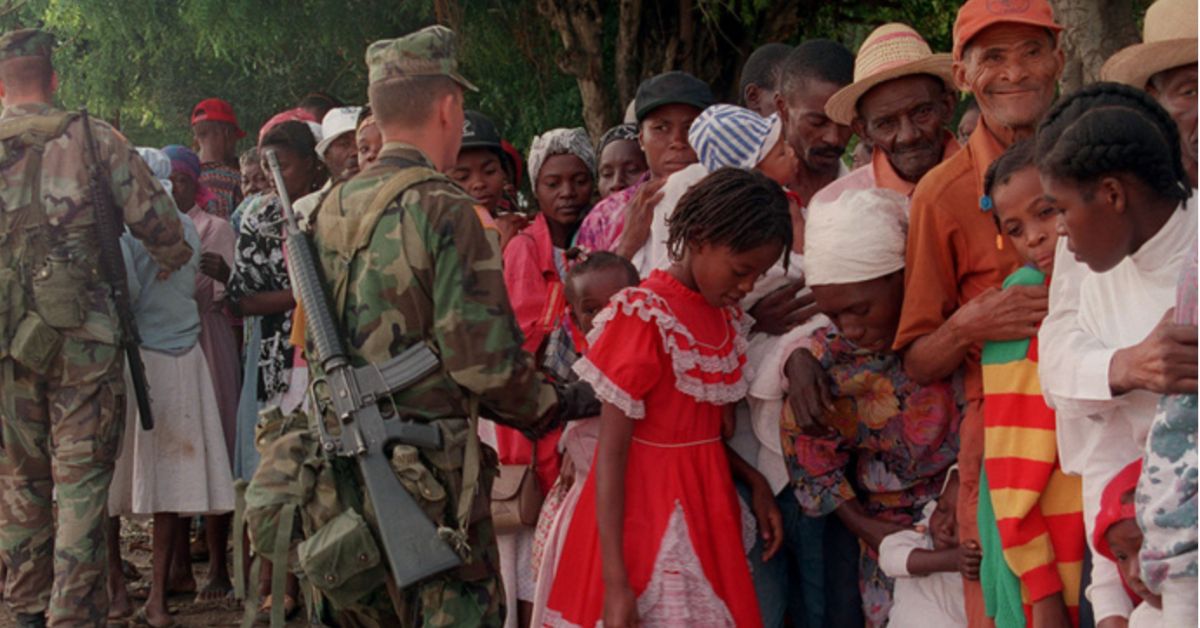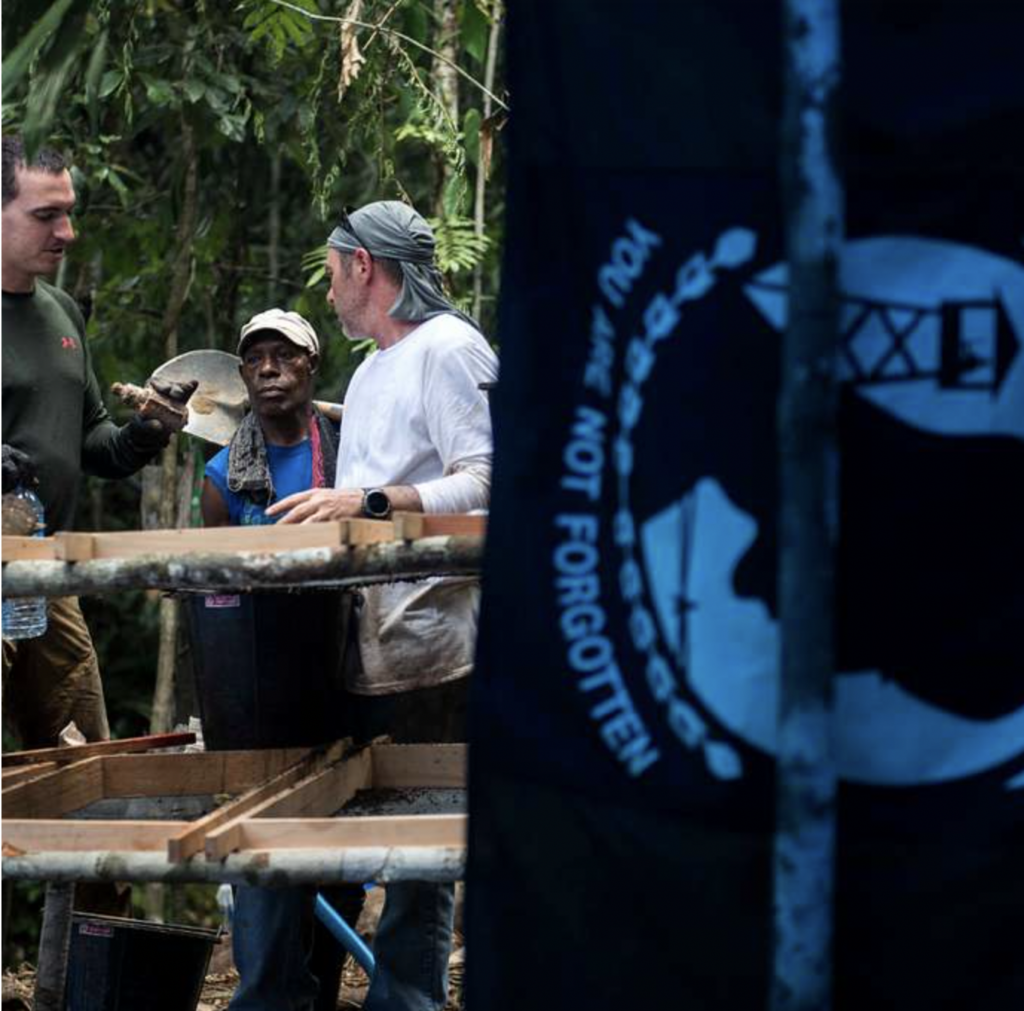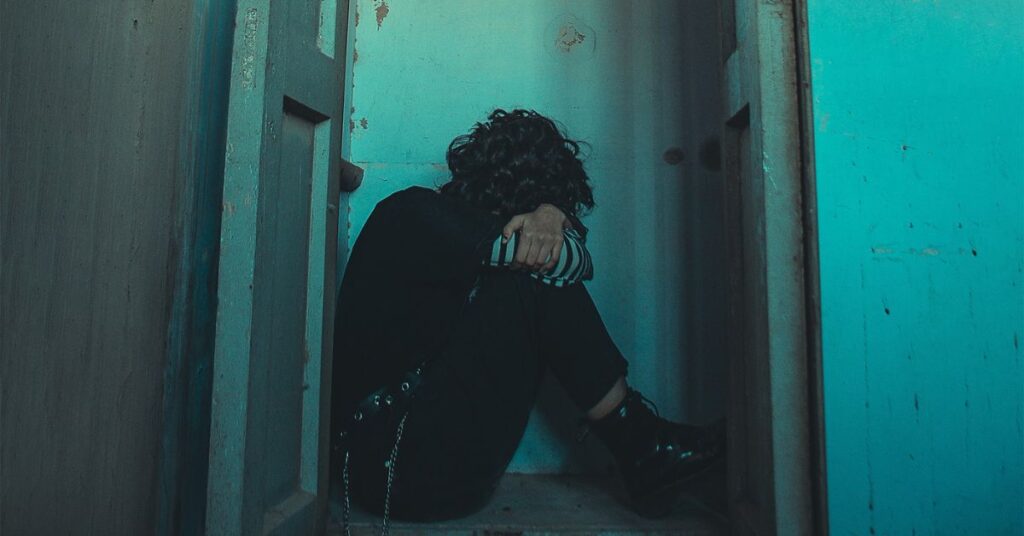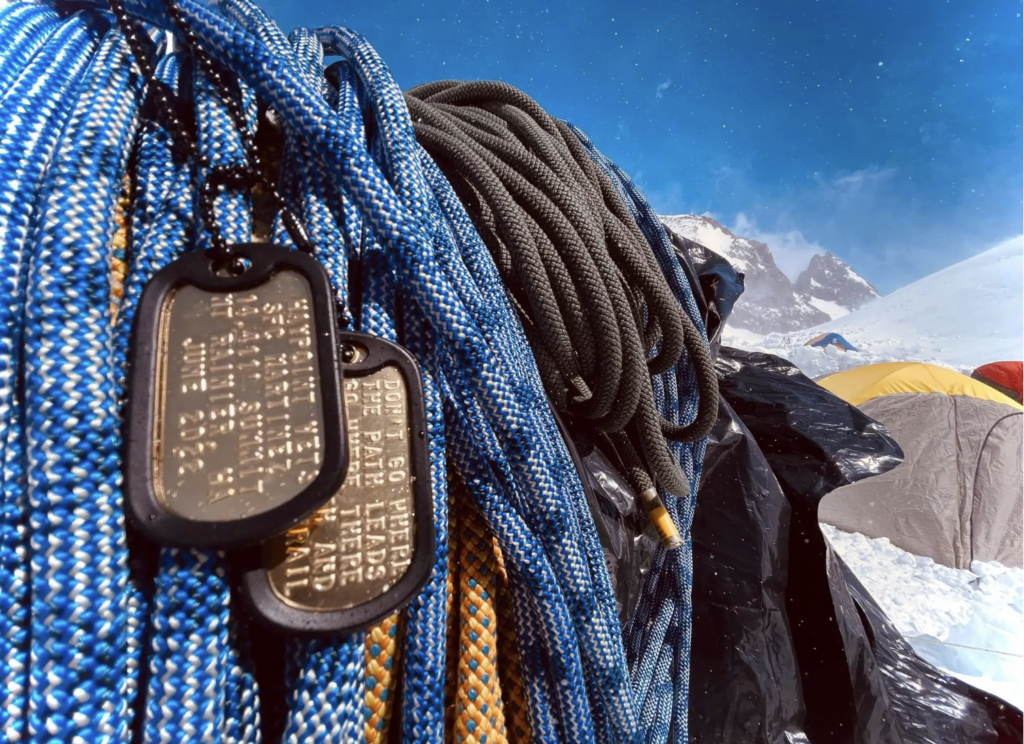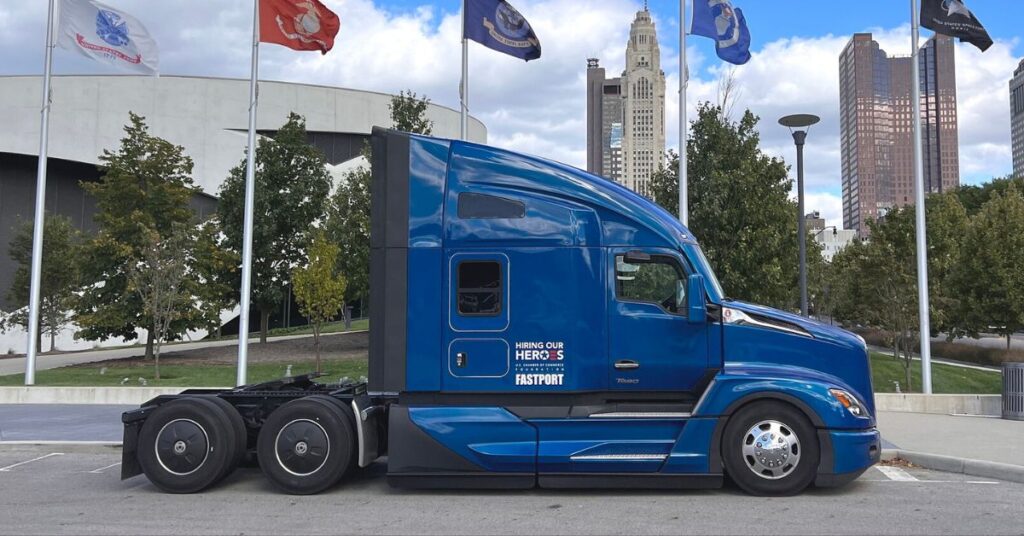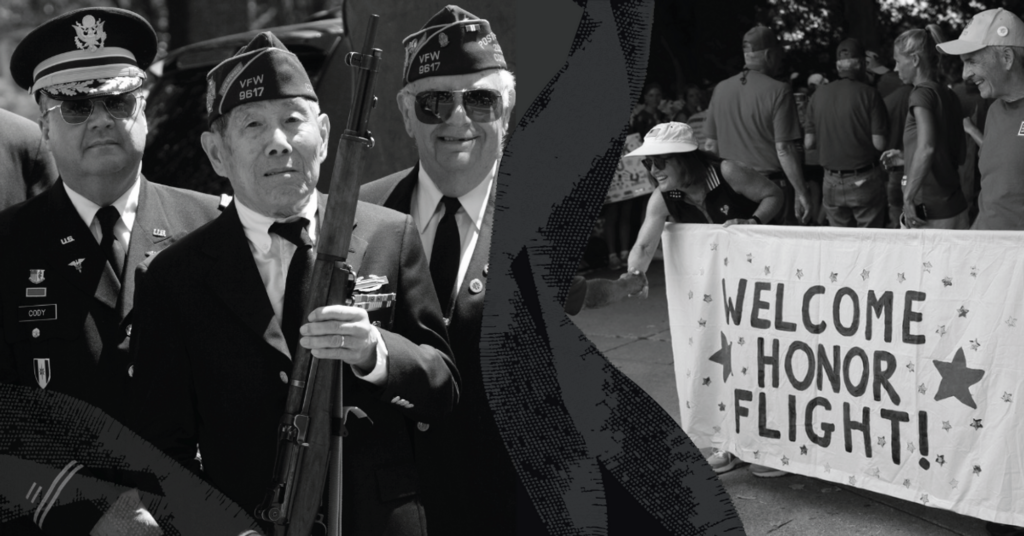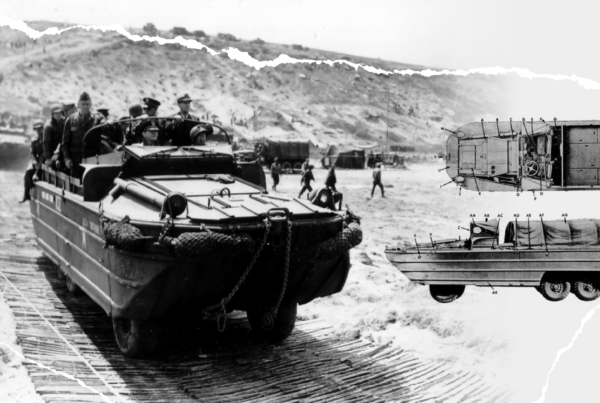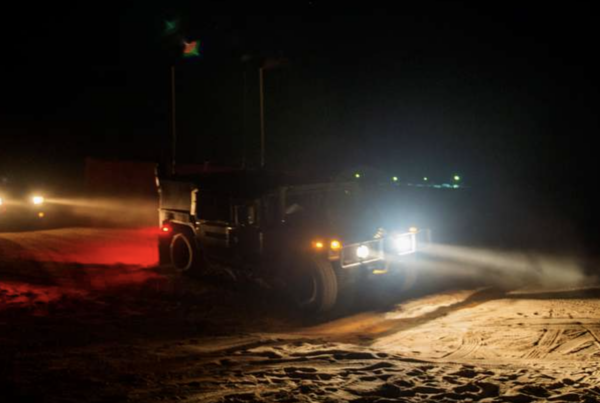Haiti, a Caribbean nation with a thunderously tumultuous past. For decades, it has been plagued by political turmoil, corruption, and extreme violence. These issues are only exacerbated by devastating natural disasters.
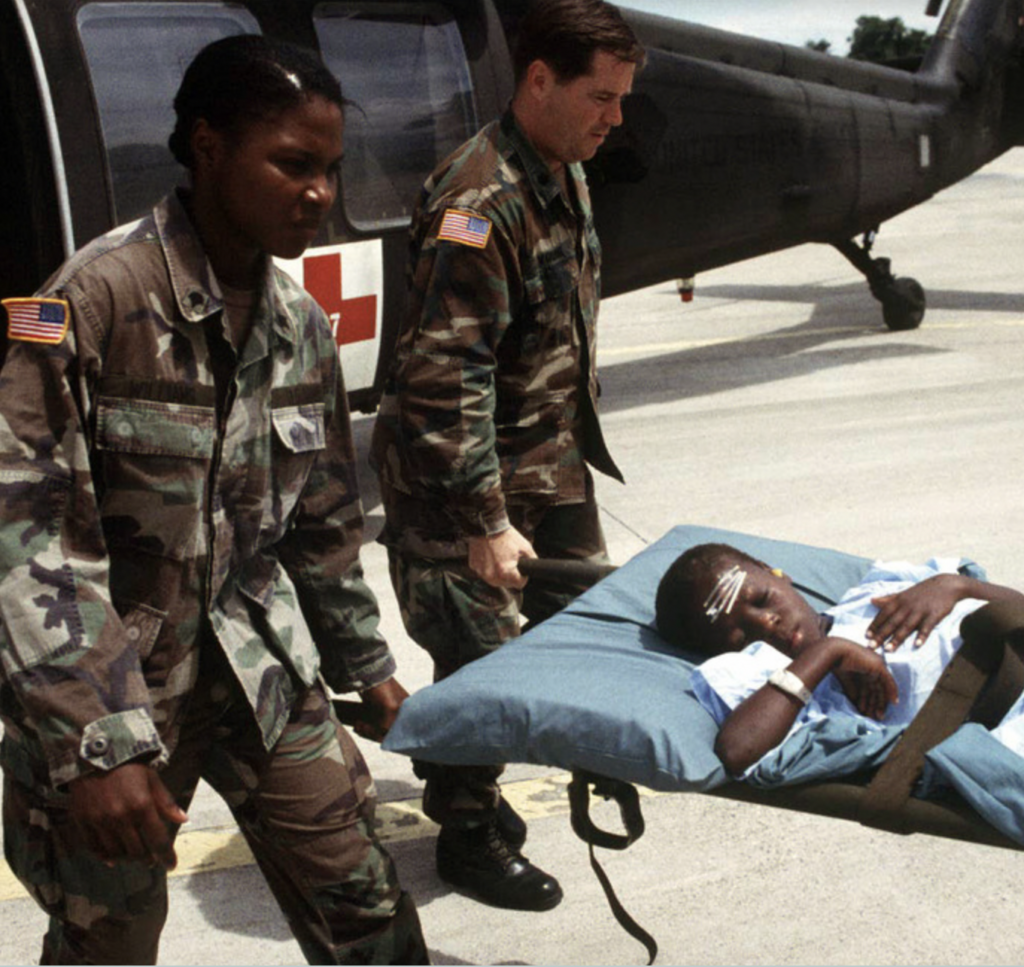
In the 1990s, the situation in Haiti reached a critical point, leading to the US intervention known as Operation Uphold Democracy.
By 1994, Haiti was in dire chaos. The democratically elected president, Jean-Bertrand Aristide, had been ousted in a coup, and a confidently evil military regime had assumed control of the country.
“The military junta led what U.S. President Bill Clinton called a reign of terror, raping civilians and killing around 5,000 Aristide supporters over the next three years…Many of the victims were “tortured and made to lay in open sewers before being shot,” TIME later reported.”
The Haitian people, frustrated and angry, took to the streets to demand their leader’s return. The situation was volatile and dangerous, and the US government decided to act on behalf of the Haitian people.
In September 1994, more than 20,000 US troops were sent to Haiti as part of Operation Uphold Democracy. Their mission was to restore democracy and bring stability to the country. The troops were deployed across the country, setting up bases and patrolling the streets.
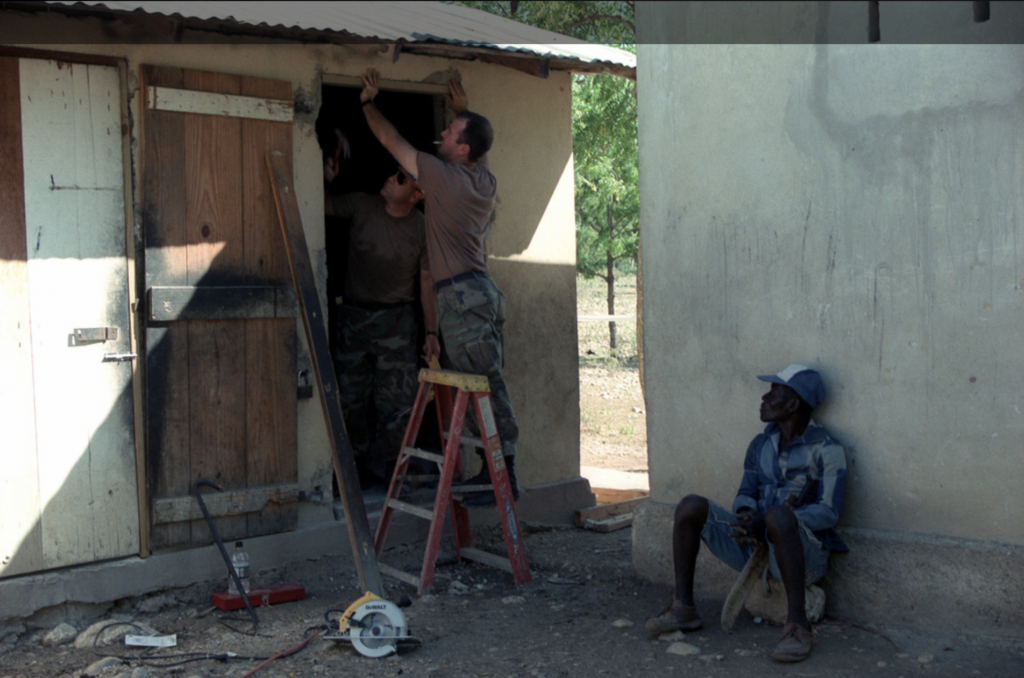
The US troops used a variety of tactics to maintain order in the streets. One of their most important tools was their vehicles. They used trucks to transport troops and equipment through the cities and towns, which helped them move quickly and respond to any situation.
During the operation, the US troops faced many challenges. One of the most difficult was dealing with the violence and unrest in the streets. But they were also able to make a difference in people’s lives.
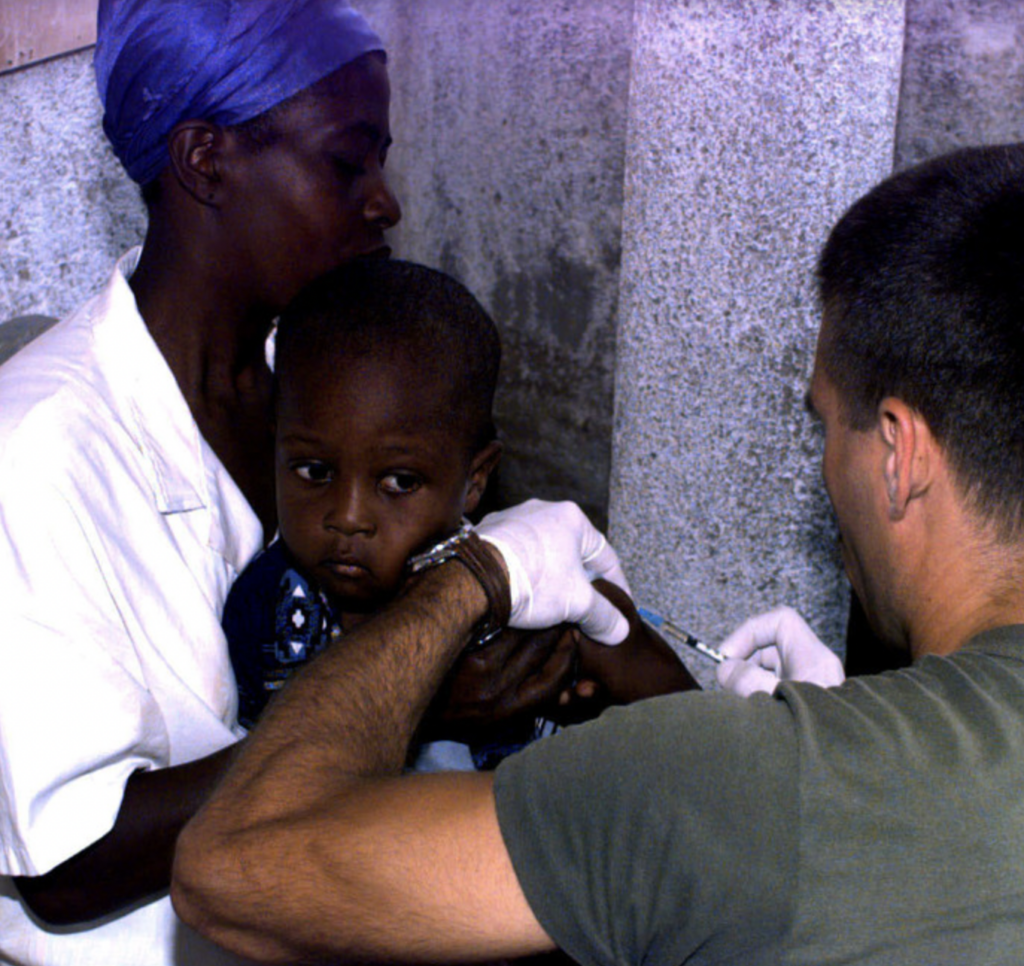
US Troops helped restore order and democracy– but they also worked to care for the Haitians’ desperate needs– they helped build schools for Haitian children and provide dental care. They also cooked on board their aircraft for Haitians and provided meals.
Eventually, the US troops were able to achieve their mission: Democratically elected Jean-Bertrand Aristide was returned to power, and the country began to stabilize. In March 1995, the US troops began to pack up and leave Haiti, leaving behind a country that was on the path to democracy.
“James Dobbins, who was U.S. Special Envoy at the time, was on the plane with President Aristide as he was brought back to power. ‘Seeing the ecstatic crowds greet him at the airport and then going to the reception at the Presidential Palace where Aristide gave a speech, it was certainly quite impressive,’ Dobbins tells TIME.”


